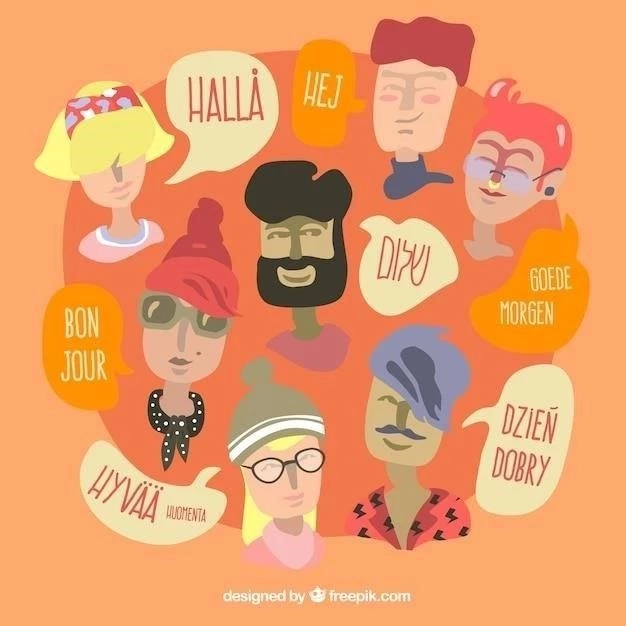Language, a fundamental aspect of human existence, has fascinated scholars for centuries. Among the many mysteries surrounding language, the origin and evolution of the Indo-European language family stand out as a particularly captivating area of study. This article delves into the depths of linguistic history, tracing the journey from the hypothetical Proto-Indo-European language to the diverse array of tongues spoken today.

The Birth of a Family: Proto-Indo-European
Imagine a time long before written records, a time when the ancestors of millions shared a common tongue. This original language, known as Proto-Indo-European (PIE), is the reconstructed ancestor of a vast and widespread family of languages. Though no written texts of PIE exist, linguists have painstakingly pieced together its structure and vocabulary by comparing its descendants, much like paleontologists reconstruct dinosaurs from scattered bones.
The Indo-European language family encompasses over 400 languages spoken by nearly half of the worlds population. This linguistic family branches out across continents, from the Americas and Europe to South Asia and Australia. The sheer geographic spread and diversity of Indo-European languages are a testament to the enduring legacy of PIE.

Reconstructing the Past: The Comparative Method
The reconstruction of PIE is a remarkable feat of linguistic detective work, primarily achieved through the comparative method. This method involves meticulously analyzing similarities and differences in vocabulary, grammar, and sound systems among related languages. By identifying regular sound changes and patterns of grammatical development, linguists can work backward, like time travelers, to unveil the secrets of the ancestral language.
For instance, consider the word for “father” in various Indo-European languages:
- English: father
- German: Vater
- Latin: pater
- Sanskrit: pitṛ
Despite minor variations, these words share a striking resemblance, pointing to a common ancestor. By comparing numerous such cognates (words with a common origin), linguists have reconstructed the PIE word for “father” as *ph₂tḗr.
A Glimpse into the Lives of Proto-Indo-Europeans
While PIE remains shrouded in mystery, linguistic reconstruction offers tantalizing glimpses into the lives and culture of its speakers. For example, the reconstructed PIE vocabulary suggests that they were a pastoral people, familiar with horses, cattle, and sheep. They likely lived in a region with cold winters, as evidenced by words for snow, ice, and wolf.
Furthermore, the reconstruction of PIE kinship terms reveals a complex social structure with distinct terms for different family members, including father, mother, son, daughter, brother, sister, and even uncle and aunt on both the mothers and fathers sides.
The Spread and Diversification of Indo-European Languages
Linguists believe that PIE was spoken around 4500-2500 BCE, possibly in the Pontic-Caspian steppe of Eastern Europe. From this homeland, the speakers of PIE embarked on a series of migrations, spreading their language and culture across vast distances. These migrations, spanning millennia, led to the diversification of PIE into distinct branches, each with its own unique characteristics.
Some of the major branches of the Indo-European language family include:
- Anatolian: The earliest attested branch of Indo-European, including Hittite, Luwian, and Palaic.
- Indo-Iranian: The largest branch in terms of speakers, encompassing languages such as Sanskrit, Hindi, Urdu, Persian, and Kurdish.
- Greek: A branch with a long literary tradition, including Ancient Greek and its modern descendants.
- Italic: The branch from which Latin descended, giving rise to Romance languages such as Spanish, French, Italian, and Portuguese.
- Celtic: A branch once widespread across Europe, now primarily represented by Irish, Scottish Gaelic, Welsh, and Breton.
- Germanic: The branch that includes English, German, Dutch, Swedish, and Norwegian.
- Balto-Slavic: A branch comprising Baltic languages (Lithuanian, Latvian) and Slavic languages (Russian, Polish, Czech, Serbian, Croatian).
From Ancient Roots to Modern Tongues
The Indo-European language family is a testament to the enduring power of language to connect generations across time and space. From the hypothetical Proto-Indo-European spoken millennia ago to the diverse tapestry of modern languages, the journey has been one of constant evolution and diversification.
As linguists continue to delve deeper into the intricacies of language change and reconstruction, our understanding of the history of the Indo-European language family continues to grow. Each new discovery offers a glimpse into the past, shedding light on the origins of language and the shared heritage of millions.
Factors Driving Linguistic Diversification
The remarkable diversification within the Indo-European family stems from a confluence of factors. Geographical separation, a key driver, led to isolated development of dialects, eventually evolving into distinct languages. This process, most evident in the branching of the Indo-Iranian languages across vast swathes of Asia, also underpins the emergence of separate Germanic tongues following migrations throughout Europe.
Language contact further fueled diversification. As Indo-European languages spread, they encountered existing languages spoken by other groups. This contact resulted in borrowing of words, grammatical structures, and even phonetic features. The Romance languages, for instance, bear the imprint of languages spoken in the Roman Empire, while English acquired a significant portion of its vocabulary from Norman French following the Norman Conquest.
Internal linguistic changes, independent of external influence, also played a crucial role. Sound shifts, analogical leveling, and grammatical innovations constantly reshape languages over time. The Great Vowel Shift in English, a series of systematic vowel changes between the 14th and 18th centuries٫ exemplifies such internal evolution٫ differentiating Modern English pronunciation from its Middle English predecessor.
Unraveling the Indo-European Tapestry
The study of Indo-European languages is a dynamic and ever-evolving field. New discoveries, such as the identification of Tocharian, a branch of Indo-European once spoken in Western China, continue to refine our understanding of the familys history and geographical spread.
Linguists employ increasingly sophisticated methodologies, incorporating computational analysis, large-scale language databases, and insights from related disciplines like archaeology and genetics. This interdisciplinary approach sheds light not only on the linguistic past but also on the cultural practices, migrations, and interactions of ancient populations.
The ongoing exploration of the Indo-European language family offers a captivating journey into the depths of human history. By tracing the threads of linguistic evolution, we gain profound insights into our shared linguistic heritage and the intricate tapestry of human communication that continues to evolve today.
Delving Deeper: Sub-Branches and Their Significance
Each branch of the Indo-European family further subdivides into numerous sub-branches, each representing a unique trajectory of linguistic development and cultural interaction. Let us delve into some notable examples:
1. Indo-Iranian: A Tapestry of Languages Across Asia
The Indo-Iranian branch, boasting the largest number of speakers within the family, splits into two main groups: Indic and Iranian. The Indic group encompasses languages spoken primarily in South Asia, including Hindi, Urdu, Bengali, Punjabi, and Marathi. These languages, descended from Sanskrit, a liturgical language with a rich literary heritage, demonstrate the profound influence of cultural and religious exchange along ancient trade routes.
The Iranian group spans languages from the Middle East to Central Asia, encompassing Persian, Kurdish, Pashto, and Tajik. These languages, descended from Old Persian, the language of the Achaemenid Empire, showcase the impact of political power and cultural diffusion on linguistic evolution. The spread of Islam further shaped these languages, introducing Arabic loanwords and influencing script development.
2. Germanic: From Northern Europe to Global Dominance
The Germanic branch, originating in Northern Europe, encompasses languages spoken across a wide geographical expanse. This branch divides into three sub-branches: West Germanic (English, German, Dutch), North Germanic (Swedish, Norwegian, Danish, Icelandic), and East Germanic (extinct languages such as Gothic).
The West Germanic languages, particularly English, have attained global prominence due to historical factors like colonialism, trade, and technological innovation. The North Germanic languages, relatively homogeneous due to prolonged contact, display intriguing features like tonal systems and grammatical innovations.
3. Balto-Slavic: Unity and Diversity in Eastern Europe
The Balto-Slavic branch comprises two groups: Baltic and Slavic. The Baltic group, once more extensive, now includes only Lithuanian and Latvian, spoken in the Baltic region. These languages, considered conservative in preserving archaic Indo-European features, offer valuable insights into the proto-languages phonology and grammar.
The Slavic group, encompassing languages like Russian, Polish, Ukrainian, Czech, Slovak, Serbian, Croatian, and Bulgarian, represents a complex linguistic landscape shaped by historical migrations, political upheavals, and cultural interactions. The influence of Old Church Slavonic, a liturgical language, and the adoption of different writing systems (Cyrillic and Latin) further contribute to the diversity within this branch.

Ongoing Research and Future Directions
Despite significant progress in reconstructing the Indo-European language family tree, numerous questions remain unanswered. Linguists continue to debate the precise location of the Proto-Indo-European homeland, the chronology of branch splits, and the intricate details of linguistic change. The discovery of previously unknown Indo-European languages or dialects, like the recent identification of Anatolian languages, has the potential to revolutionize our understanding of the familys history.
Advancements in computational linguistics, statistical modeling, and the availability of vast digital corpora offer exciting new avenues for research. By harnessing these tools, linguists can conduct more robust comparative analyses, refine reconstructions, and uncover hidden patterns in linguistic evolution.
The study of the Indo-European language family is a journey of exploration, revealing the interconnectedness of human languages and cultures across time and space. As we continue to delve deeper into this fascinating field, we gain a richer understanding of our shared linguistic heritage and the remarkable tapestry of human communication.










